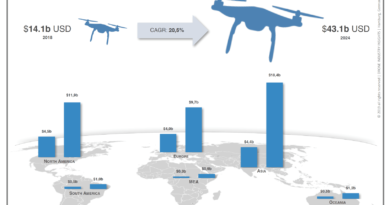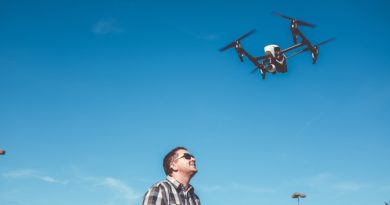Why the Skiing Industry May Soon be a Big Customer for UAVs
![]()
Ski resorts are big business. A recent analysis revealed that the annual impact of the industry amounted to 4.8 billion USD in the state of Colorado alone. Considering that ski resorts exist all around the globe, from Finland to Argentina, you may want to let the sheer scale of the industry sink in for a moment. In fact, skiing even exists on the equator at Cayambe, Ecuador, where elevations are high enough to harbor snow.
But the sport presents a unique set of challenges – among them infrastructure maintenance in inherently challenging and remote landscapes as well as ecological analysis which must be conducted to prevent environmental disruption and increased avalanche risk. UAVs could be the answer for both.
The Impact of Infrastructure on the Surrounding Environment
The sport of skiing has come a long way since it originated as a practical form of transportation in Scandinavia centuries ago. The first true ski resorts began emerging in the early twentieth century and since then have gone through a number of different generations of development with varying impacts on their surrounding environments and populations.
Resorts are a boon for many local communities in mountainous areas of Europe and beyond, bringing in significant income and increase in quality of life for communities that otherwise may have limited resources to offer the outside world. But they also bring ecological problems if proper construction and maintenance is not conducted.
Ski resort infrastructure and its accompanying architecture can be a major disruptor for water levels and wildlife activities. The construction and implementation of snow cannons, ski lifts, pylons and roads involves significant shifts in water distribution which could contribute to unwanted erosion, destruction of vegetation and even avalanches.
Analyzing Terrain at Scale: A Case Study
Carefully monitoring an area as large as a ski resort for environmental and infrastructural reasons is a monumental task. If it is to be conducted through sheer manpower, compromises will inevitably be necessary. That’s where technology comes in.
In one case study, Flight Evolved, a commercial surveying company, utilized aerial LiDAR (a sophisticated method of creating high resolution 3d maps of terrain) to collect over 1.7 billion points of data over thousands of meters of steep and inhospitable terrain in less than a day.

Covering an area like this on foot would have resembled an Olympic sport. And even traditional aerial methods of surveying would have seen limited results due to the irregularity of the elevation (resulting in inconsistent data point density collected by sensors). And while Flight Evolved utilized a manned helicopter for this operation, future excursions could be made even more effective by employing drones.
Mapping Future Implications
Because LiDAR does not require light in the visible spectrum to be effective, mapping operations like the aforementioned case could effectively be conducted in the dark with a drone. In extremely polar locations such as the Saariselka Ski Resort in Finland, a December day could yield less than two and a half hours of daylight. For resorts with seasonally limited daylight, a drone could be the only option for maintaining detailed up-to-date maps at certain times of the year.
Maps like this can can be precise enough not only to monitor the condition of infrastructure but also to conduct ecological and snow hydrological analyses. This means that there are numerous reasons ski resorts would benefit from access to this type of data – especially as increased accessibility lowers cost of acquisition.
Collecting high resolution data at scale has great implications for snow hydrologists and avalanche scientists. And more affordable data means ski resorts can make better decisions about their infrastructure. Avalanches and environmental degradation are bad for business. UAVs can help.
Guest post by Ryan LaDue, a writer based out of Nashville, TN who specializes in commercial construction industry topics.



